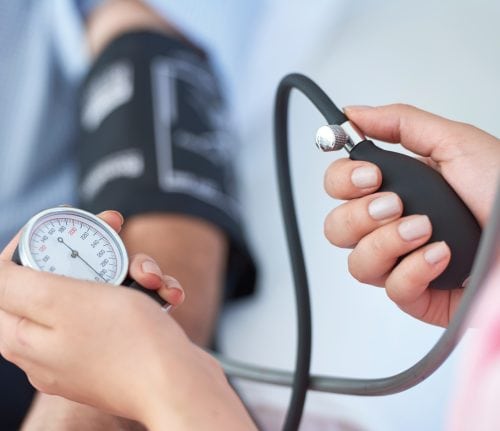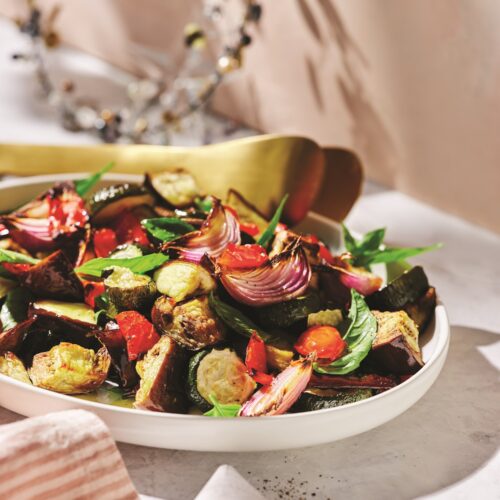
We’ve probably all had our blood pressure checked at some point in our lives. In the first instalment of our pre-conditions series, dietitian Katrina Pace looks at what to do if the results comes back high.
Hypertension, or high blood pressure, is a fairly common condition, affecting roughly one in three adults. One in six adults takes medications to control blood pressure, according to a recent health survey. So what can you do to reduce your risk, and what steps can you take if you’re diagnosed with hypertension or pre-hypertension?
Understanding blood pressure
Blood pressure is what your doctor or nurse measures when they put the inflatable cuff around your arm at the doctor’s clinic. They look on a dial or read it out as they let the air out of the cuff. They’ll often tell you two different numbers as your result.
The first, the higher number, is the systolic blood pressure and the second, the lower number, is the diastolic blood pressure. Systolic pressure is the force of blood against blood vessel walls as it pumps when the heart beats. The diastolic pressure is the force when the heart is resting between beats.
What’s ideal BP?
An ideal blood pressure is 120/80. Slightly raised blood pressure (if your blood pressure is between 120/80 and 140/90) is called pre-hypertension. If your blood pressure is 140/90 or greater consistently, this is called hypertension. If you have pre-hypertension you’ll often be advised to make diet and lifestyle changes to stop your blood pressure getting higher. If you have hypertension, your doctor may prescribe you medications alongside the same lifestyle changes.
What does having hypertension mean to me?
As your heart pumps blood around your body, the blood presses against the walls of blood vessels. When your blood pressure is high, blood pushes against the walls of vessels with more force. Over time this can weaken blood vessels, making them more likely to burst. Blood vessel walls also can become thicker with all the extra exercise they’re having to do, which causes narrowing, making blood pressure even higher. This increases the risk of heart attack, stroke, kidney disease and eye damage.
What’s my risk?
You’re more likely to have hypertension if you are:
- 75 years or older (3/4 have high blood pressure)
- overweight
- someone with a family history of hypertension
- eating too much sodium/not enough potassium and drink too much alcohol
- not doing enough exercise
- experiencing ongoing stress
- a smoker.
What can I do to lower my blood pressure?
Even if you are advised to start medication, there are some simple diet changes that can help lower your blood pressure. Making simple changes can easily tip the balance from pre-hypertension back to normal blood pressure.
A diet approach
The ‘DASH’ diet (Dietary Approaches to Stop Hypertension) was published 20 years ago and has repeatedly been shown to successfully lower blood pressure in people with both hypertension and pre-hypertension. The diet encourages us to have eight-plus servings a day of fruit and vegetables (increasing potassium which lowers sodium), 2-3 servings daily of low-fat dairy (calcium for heart health), lower sodium intake by avoiding processed food, and choose wholegrain cereals, nuts and seeds (high in magnesium to reduce blood pressure).
Eat more fruit and vegetables
Because potassium can help lower your blood pressure, set yourself a goal to have fresh fruit or veggie sticks as a snack each morning, instead of crackers, cake or coffee. Over the next month, gradually increase your vegetables at dinner so they are half of what’s on your plate.
Take a deep breath and get moving
Making time to relax and manage your stress can start you on the path to lower blood pressure and exercise is a great way to increase feelings of well-being and lower blood pressure. There are lots of little ways you can increase your activity. Walk around the house or up the stairs, or park at the far end of the shopping mall.
Sodium and salt
If you look at the recipes in Healthy Food Guide, alongside energy and fat in the nutrition panel you’ll find sodium. Sodium is the main nutrient that increases blood pressure. More sodium in the blood stops the kidneys filtering out water as efficiently. With more water being carried in the blood, the volume being pumped by the heart is higher, meaning the heart has to pump harder, exerting more pressure and increasing blood pressure.
Table salt, and the salt added to packaged foods, is sodium chloride. It’s the sodium in sodium chloride that’s the problem. Salt is added to many prepared foods such as chips, bread, cheese, salami, soups and sauces. The recommendation is 2300mg sodium (that’s about 1 teaspoon of salt) or less a day, but reduce this to 1600mg or less if you’ve got pre-hypertension or hypertension.
Are all salts created equal?
There are a few different types of salt on the market. Some are chunky, some are pink, but all types of salt contain almost identical amounts of sodium.
Hold the salt
- Do you find yourself adding salt to your meal without tasting it first? Make sure you taste your meal first to see if you really do need to add any. If you do, then try sprinkling on a bit less each week. Over time you’ll reduce how much you need as your taste buds get used to it.
- Use herbs and spices to enhance the flavour of your food, without the need for salt. Healthy Food Guide is full of great ideas on how to start using herbs and spices.
- Be aware of where you are getting salt from in bought foods – it might be in foods you least suspect. Around 75 per cent of salt intake comes from processed foods. Check the labels to see what the sodium content is, and try to choose the product with the least sodium per 100g.
See Health check: How to have strong bones for the second instalment of our pre-conditions series.
Article sources and references
- Blood Pressure UK. Salt and blood pressure, bloodpressure.org.uk, accessed September 2017http://www.bloodpressureuk.org/microsites/salt/Home
- Drake SL & Drake MA. 2011. Comparison of salty taste and time intensity of sea and land salts from around the world. Journal of Sensory Studies 26:25-34https://onlinelibrary.wiley.com/doi/abs/10.1111/j.1745-459X.2010.00317.x
- Ministry of Health. 2016. Annual Update of Key Results 2015/16: New Zealand Health Survey. Wellington: Ministry of Healthhttps://www.health.govt.nz/publication/annual-update-key-results-2015-16-new-zealand-health-survey
- National Heart, Lung and Blood Institute. Risk factors for high blood pressure, nhlbi.nih.gov, accessed September 2017https://www.nhlbi.nih.gov/health-topics/high-blood-pressure
- New Zealand Guidelines Group. 2012. New Zealand Primary Care Handbook 2012. 3rd ed. Wellington: New Zealand Guidelines Grouphttps://www.health.govt.nz/publication/new-zealand-primary-care-handbook-2012
- Saneei P et al. 2014. Influence of Dietary Approaches to Stop Hypertension (DASH) diet on blood pressure: A systematic review and meta-analysis on randomised controlled trials. Nutrition, Metabolism and Cardiovascular Disease 24:1253-61https://www.ncbi.nlm.nih.gov/pubmed/25149893
www.healthyfood.com










